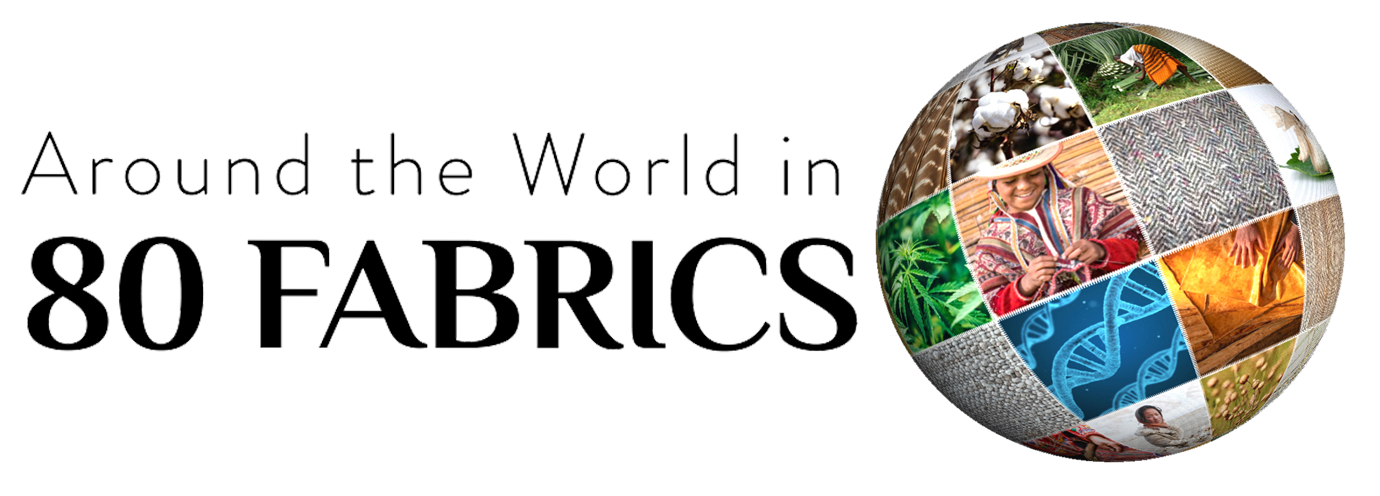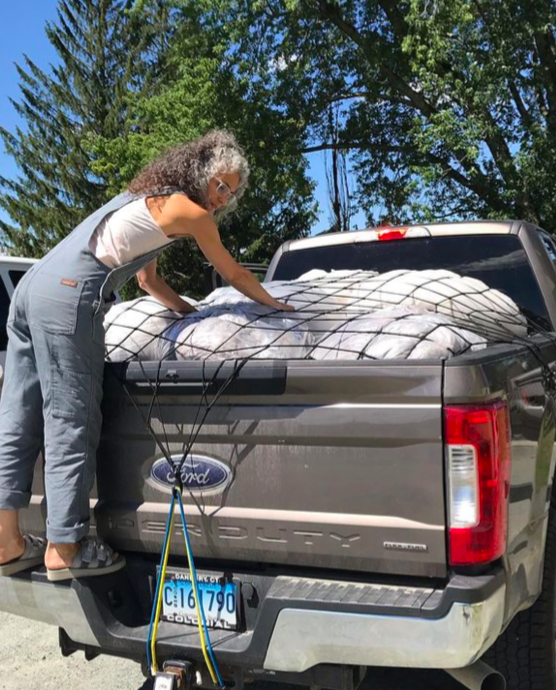
FABRIC: CLIMATE BENEFICIAL™ WOOL
Region: New York Hudson Valley, USA
Fabric Name:
Carbon Farm Network fabric
Origin:
50% alpaca 50%wool
Who made our fabric:
New York Textile Lab, Hudson, NY
Natural history and ecology:
This textile in our collection was developed by New York Textile Lab as part of our Carbon Farm Network: a group of designers who work cooperatively to purchase carbon-farmed fibers from partnering farms in our NYS region. This Jacquard knit textile is made from 50/50 single alpaca/wool yarn. There are no dyes used in the manufacturing of this textile. The color comes from animal fibers.
What makes this so special:
This 50% alpaca/50% wool was designed and woven by Laura Sansome of the New York Textile lab which brings NY designers and farmers together to create a decentralized, regenerative textile supply network. Textile Lab’s Regional Yarn Sourcebook links apparel, product and interior designers to regional farms and fiber processing mills and includes Climate Beneficial™ fibers grown on NY farms who practice Carbon Farming.
Linking farmers and designers through a Carbon Farm Network

“Our Carbon Farm Network operates through democratic governance, enables collaborative value creation, and supports the distributed growth of small to mid-scale businesses. This way, everyone has a stake in the cultivation and marketing of Climate Beneficial™ textiles and clothing.”
— Laura Sansone/ New York Textile Lab
Laura Sansone
Meet Laura Sansone, creator of the New York Textile Lab, an initiative that brings together New York’s designers and farmers to create more sustainable products. Sansone’s work centers around the notion that designers and consumers should be in touch with the materials they use and wear, and the impact of their work—both positive and negative. Partnering with smaller farms and independent designers, Sansone shifts the typical centralized economic distribution model, including bolstering groups to promote the climate mission.
As Sansone sees it, she wants to shift the cycle of production, giving designers insight into the process before they receive their material, as she explained to ATW80F: “For me, the first thing is moving designers to the beginning of that value chain…connecting them directly to their resources. Because we don’t enter the value chain until we’re purchasing from a distributor basically right in the middle [of the chain], or from a fabric supplier. Moving designers to the beginning of that value chain is one way to start changing the shape of our economy…and that enables us to start to make better decisions about what we’re investing in, right? So we could be partnering with farms that are practicing carbon farming, climate beneficial protocols, or biodiversity. Or we could be investing in localism with our partners, right? It’s endless, the amount of—what I call—deep value flows that we could be embedding in our textiles and clothing, or whatever we’re making.”
Moving forward, Sansone is looking to organize her work with NYTL into an app where she can coordinate activities and interactions between the carbon farm network, which will allow the Lab to grow and expand its environmental pursuit to even more people.
More about this fabric…







